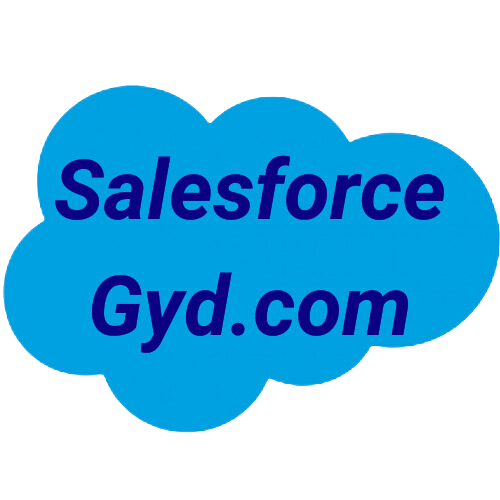In the realm of Salesforce administration, the ability to efficiently query user profiles is invaluable. This process enables administrators to manage access, ensure security, and maintain system integrity. Querying profiles can help in identifying specific permissions, understanding user access, and conducting audits. Whether you’re a seasoned Salesforce professional or a newcomer, mastering the technique of querying user profiles is a cornerstone skill that enhances your capability to manage Salesforce environments effectively.
Contents
What is a User Profile in Salesforce?
In the world of Salesforce, the cornerstone of personalization and security lies within what’s known as a “User Profile.” Imagine it as a digital ID card which not only tells who you are but also outlines what you can do, see, and manage within the Salesforce ecosystem.
At its core, a User Profile determines the level of access a user has. This includes permissions to perform certain actions (like editing or deleting records), visibility into various modules (or objects), and even the layout of the information presented.
Why Do You Need to Query User Profiles in Salesforce?
The need to query user profiles in Salesforce stretches beyond mere curiosity; it’s about harnessing control and ensuring the smooth operation of your Salesforce environment. As your organization grows and evolves, the complexity within your Salesforce instance will naturally follow suit. Here’s why querying user profiles becomes essential:
Generating Reports
Detailed insights into user profiles can help administrators generate comprehensive reports. These reports can highlight user access trends, pinpoint security loopholes, or even assist in auditing processes—providing a bird’s eye view of the platform’s security posture.
Managing User Permissions
As new functionalities are added or business processes change, you’ll need to adjust user permissions accordingly. Querying user profiles allows you to review and manage these permissions en masse, ensuring that users have the access they need—nothing more, nothing less.
Troubleshooting Issues
Sometimes, the key to troubleshooting user issues, like access denials or unexpected behaviors within the platform, lies within their profiles. Quickly querying these profiles can shine a light on the root cause, accelerating resolution times.
How to Use SOQL to Query User Profile Information?
Navigating through Salesforce, especially when trying to retrieve specific data, can feel like searching for a needle in a haystack. Thankfully, with Salesforce Object Query Language (SOQL), you can become a data wizard, effortlessly calling forth the information you desire. Let’s explore how you can use SOQL to query user profile information in a few simple steps.
Step 1: Understand Your Data Model
Firstly, it’s paramount to have a grasp of the Salesforce data model, particularly how user profiles are structured. In Salesforce, the Profile object contains all the tidbits you need about user profiles. Remember, knowing your destination is half the journey.
Step 2: Access the Developer Console
Open Salesforce Developer Console. This can be done by clicking on the Gear icon in the top-right corner of your Salesforce org and selecting ‘Developer Console’.
Step 3: Draft Your Query
Start drafting your query. If you’re looking to fetch basic profile information, your SOQL query might look something like this:
SELECT Id, Name, Description FROM Profile
This query retrieves the ID, Name, and Description of all user profiles.
Step 4: Execute and Review
Hit the “Execute” button. The results will magically appear below the query editor. Review the data fetched to ensure it meets your requirements.
Step 5: Refine Your Query
Need more specific data? Refine your query by adding conditions using the WHERE clause. For example:
SELECT Id, Name FROM Profile WHERE Name = 'Standard User'
This refined query fetches the ID and Name of the profile named ‘Standard User’.
Step 6: Use and Iterate
With the data in hand, you can now use it for your specific needs—be it reports, dashboards, or further data manipulation. Don’t be afraid to iterate and refine your queries for different data insights.
What are Some Advanced Queries for User Profiles in Salesforce?
As you become more comfortable with SOQL, you’ll want to unlock its true potential by executing more advanced queries. Here are some examples that highlight the versatility and power of SOQL for user profile data.
Querying User Profiles with Specific Permissions
Suppose you need to find all user profiles that have the “Modify All Data” permission enabled. The query might look like:
SELECT Id, Name FROM Profile WHERE PermissionsModifyAllData = true
Joining with Other Salesforce Objects
You can also join the Profile object with another object like User to fetch more contextual data. For example:
SELECT Profile.Name, User.Name, User.Email FROM User WHERE Profile.Name = 'System Administrator'
This query fetches the names and emails of all users with the ‘System Administrator’ profile.
Filtering Based on Custom Permissions
If you’re working with custom permissions:
SELECT Id, Name FROM PermissionSet WHERE PermissionsCustomPerm__c = true
This fetches profiles with a specific custom permission enabled.
Are There Alternatives to SOQL for Querying User Profiles in Salesforce?
While SOQL (Salesforce Object Query Language) is a powerful tool for pulling precise data—including user profile information—sometimes, you might be looking for alternatives. Whether it’s for simplicity or due to different project requirements, there are other tools at your disposal. Let’s explore some notable mentions:
Workbench
Workbench is a versatile web-based suite of tools that offers a more interactive approach to querying Salesforce data, including user profiles. Its pros include:
- User-Friendly Interface: Allows for queries without the complexity of SOQL syntax.
- Comprehensive Access: Provides capabilities to not only query but also insert, update, or delete Salesforce data.
- Debugging and Testing: Offers tools for testing APIs or viewing system limits.
However, Workbench’s reliance on internet connectivity and its broad access rights could pose security considerations.
DataLoader
For those dealing with high-volume data operations, DataLoader presents itself as a robust desktop application catered to bulk importing, exporting, updating, or deleting Salesforce data. Its strengths are:
- Efficiency with Large Datasets: Optimized for handling vast quantities of data smoothly.
- Versatility: Supports various operations that go beyond simple querying.
- GUI and Command-Line Interfaces: Caters to both non-technical users and automation scenarios.
The primary con is its desktop-based nature, requiring installation and not being as immediately accessible as web-based tools.
Why Consider Alternatives?
Choosing between SOQL and tools like Workbench or DataLoader boils down to your specific needs:
- SOQL offers unparalleled precision and complexity in queries.
- Workbench is ideal for those seeking a more interactive, web-based solution.
- DataLoader suits scenarios involving large-scale data manipulations.
Wrapping Up
Mastering SOQL queries for user profile information not only boosts your Salesforce prowess but also significantly improves data access efficiency. Whether you’re creating simple queries or diving into complex data relationships, SOQL stands as a powerful tool in your Salesforce toolkit. Start with the basics, practice diligently, and soon, fetching any data from Salesforce will feel like a breeze.

